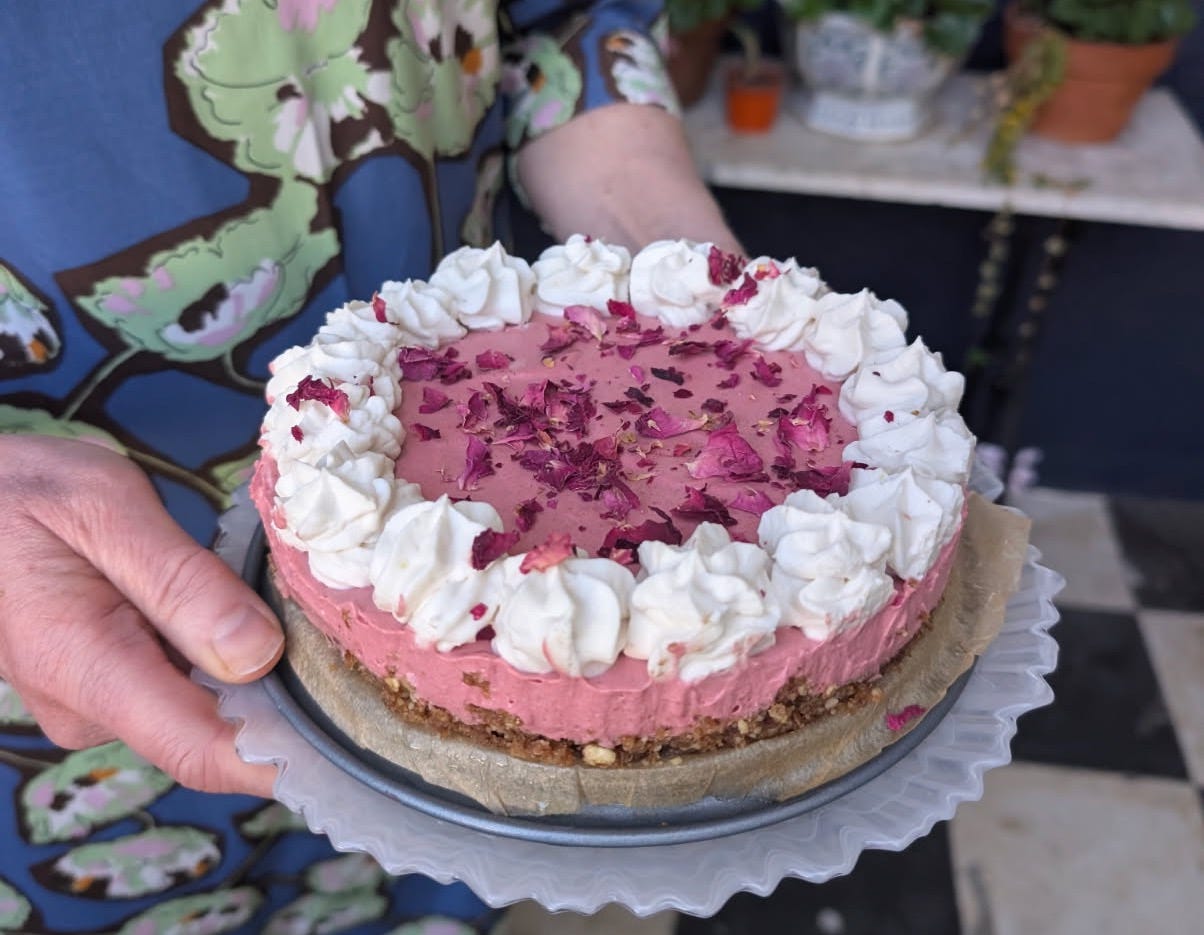I’ve had a love affair with strawberries for as long as I can remember.
Growing up in Texas, I’d eagerly await strawberry season and sit with a big bowl, eating one red, sweet gem after another. For a while, it felt like strawberries were a year-round treat—always there in the grocery store. But the magic wore off. The berries became bland, firm, and flavorless—pale imitations of what they once were.
When I moved to San Francisco in 2001, strawberries went back to being seasonal—at least where I shopped. In 2005, I had a kiosk selling my granola called Divinely D’lish at the Ferry Building Farmers Market before 18 Rabbits days. That’s where I discovered Swanton Berry Farm. Their organic strawberries were the most luscious I’d ever tasted—bursting with sun, sweetness, and something wild. The woman at their stand traded berries for my granola. It was a match made in heaven.
Swanton still grows organic strawberries along the coast in Davenport, California, where you can pick your own or stop by their farm stand if you're ever passing through.
When we moved to Portland, I assumed I’d have to rely on trucked-in California strawberries. But to my delight, Oregon has its own short—but deeply satisfying—strawberry season in early summer. Some of the beloved local varieties include Hood, Seascape, and Albion. These berries are soft, sweet, and fragrant—the kind that stain your fingers and never make it home in the basket.
Part of what makes Oregon strawberries so good is the care that goes into the soil.
Many farmers here avoid the conventional practice of soil fumigation by rotating crops and building up the land’s natural fertility. These techniques are at the heart of regenerative agriculture—a way of farming that restores soil health, encourages biodiversity, and strengthens ecosystems. Healthy soil is full of life: microbes, fungi, earthworms, and organic matter. All of it supports the plants, and in turn, the flavor and nutrition of the food we eat.
Not all strawberries are grown this way.
Mass-produced varieties are bred to ship well and last on shelves. They’re often large, white-centered, and disappointingly tart. They lack the complexity and juiciness of berries grown closer to home, under the sun, and in living soil.
If you’ve ever driven along the Central Coast of California during strawberry season, you might have noticed vast stretches of conventional farms covered in plastic. This isn’t just to suppress weeds—it’s to trap toxic fumigants used to sterilize the soil. These chemicals kill everything underground: pests, yes, but also the beneficial organisms that make soil fertile. With the soil essentially dead, plants must be sustained through synthetic fertilizers—many derived from petroleum or mined minerals.
There’s something deeply ironic about killing the very foundation of agriculture—soil—and replacing it with chemicals to keep the system going. It’s a short-term fix with long-term consequences.
Regenerative farming takes a different approach. Instead of fighting nature, it works with it—prioritizing crop rotation, composting, cover cropping, and animal integration. These methods not only produce healthier food but also help sequester carbon, retain water, and protect biodiversity. It’s farming that nourishes the land, the farmers, and the eaters.
And while we often focus on the fields and the food, we must not forget the hands that harvest it.
Whether grown conventionally or organically, strawberries are one of the most labor-intensive crops to pick. Every berry is harvested by hand, and it’s hard, repetitive work—done in the heat, bending low for hours. Many of the people doing this work are migrant or seasonal laborers who rarely get the recognition—or protections—they deserve. The strawberries we enjoy are possible because of them.
So when we go picking ourselves each June on Sauvie Island at Bella Organics, I carry that awareness with me. My son and I can fill four pounds in an hour and feel it in our backs. It’s a small glimpse into the physicality of the job, and it deepens my gratitude for those who do this work every day.
We freeze some of our haul for smoothies, eat plenty fresh, and save the rest for one of our favorite summer desserts - Strawberry Cashew Cream Pie.
Because when strawberries are this good, you don’t need to do much to them. You just need to appreciate where they came from—starting with the soil, and the people who help bring them to the table.







